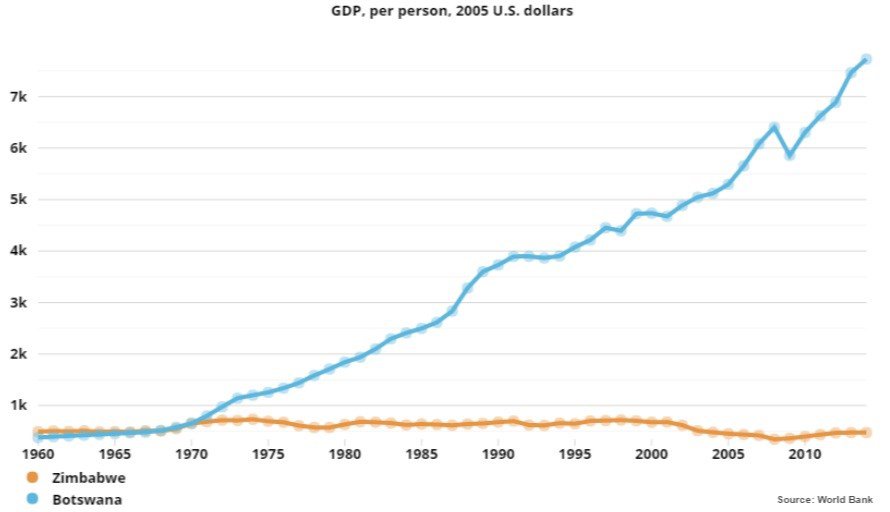No, Mr. Trump, Victims of Eminent Domain Do Not “Get a Fortune” – Article by George C. Leef
Trump’s huge mistake about eminent domain
During the debate among Republican presidential candidates last month, Jeb Bush hammered Donald Trump on his abuse of eminent domain. But Trump apparently sees nothing wrong in having government officials force people to sell their property.
Trump replied,
Eminent domain is an absolute necessity for a country, for our country. Without it, you wouldn’t have roads, you wouldn’t have hospitals, you wouldn’t have anything. You would have schools, you wouldn’t have bridges.
And what a lot of people don’t know because they were all saying, oh, you’re going to take their property. When somebody — when eminent domain is used on somebody’s property, that person gets a fortune. They at least get fair market value, and if they’re smart, they’ll get two or three times the value of their property.
This last assertion led George Mason law professor Ilya Somin (an expert on eminent domain) to quip at the Volokh Conspiracy, “If eminent domain really were a good way to make a fortune, the Donald Trumps of the world would be lobbying the government to condemn their property. But that rarely, if ever, happens.”
Put aside Trump’s hyperbole about the supposed impossibility of schools, hospitals, and bridges without eminent domain. What I want to focus on is his claim that eminent domain is not objectionable because people who have their property taken make out just fine financially.
That claim is simply indefensible. The truth is that people who lose their property to eminent domain proceedings are almost never made whole.
Legal scholars have for many years been writing about the injustice that usually befalls people who have to settle for what the government deems “just compensation” under the Fifth Amendment. I wouldn’t expect Mr. Trump to know about that because he is too busy making deals. But the kind of deals businessmen usually make involve two parties who can say “no,” unless and until they think the deal will improve their positions.
With eminent domain takings, however, the property owner can’t say “no,” and usually must settle for much less than he or she would have bargained for in a voluntary setting.
Professor Gideon Kanner has written extensively about the problem of inadequate compensation for people who’ve been forced to sell under eminent domain. In his article “[Un]Equal Justice under Law: The Invidiously Disparate Treatment of American Property Owners in Taking Cases,” he writes:
The true standard of compensation is not indemnity, but rather fair market value so artfully defined as to exclude factors that sellers and buyers in voluntary transactions would consider, and that the government need only pay for what it acquires, not for what the owner has lost.
Those losses include business goodwill, relocation expenses, and the emotional damage of having to leave a community where one may have strong ties. In the government’s calculus, people are expected to suffer such losses as part of the price of living in America.
As the Supreme Court stated in the 1949 takings case Kimball Laundry v. U.S., “Loss to the owner of non-transferable values … is properly treated as part of the burden of common citizenship.” That “tough luck, property owner” mindset still prevails.
Knowing that they hold the high cards (and ultimately the guns) when they deal with property owners, government officials take full advantage. As Kanner observes, “Condemning agencies regularly reap unjustified windfalls from the fact that the majority of their offers (including the many low-ball ones) are accepted without litigation or even involvement by a private appraiser or lawyer.”
Therefore, eminent domain causes many property owners to suffer uncompensated losses.
Far from “getting a fortune” or “two or three times” the market value of their property, most owners are left substantially worse off for their unwanted encounter with condemning government agencies. Few if any of them shrug off the losses as their part of the “burden of common citizenship.”
Although the eminent domain issue came up during a debate among presidential candidates, there is hardly anything that the president can do to rectify the problem of under-compensation for property owners. He (or she) cannot issue an executive order mandating that property owners be made whole.
If there is to be a solution, it must come from the judiciary.
Judges, and especially the justices of the Supreme Court, will have to stop ruling that merely because an individual is paid an amount deemed “fair market value,” the Fifth Amendment’s requirement of “just compensation” has been satisfied.
It would also help property owners if the Supreme Court would overturn Kelo v. New London and establish that property can only be taken for actual “public use,” as the Fifth Amendment requires, and not for private use that local politicians think might have some “public benefit.”
Since we are going to have confirmation hearings for a new member of the Court eventually, it would be important to find out precisely what the nominee thinks “just compensation” and “public use” actually mean.
George Leef is the former book review editor of The Freeman. He is director of research at the John W. Pope Center for Higher Education Policy.
This article was published by The Foundation for Economic Education and may be freely distributed, subject to a Creative Commons Attribution 4.0 International License, which requires that credit be given to the author.







